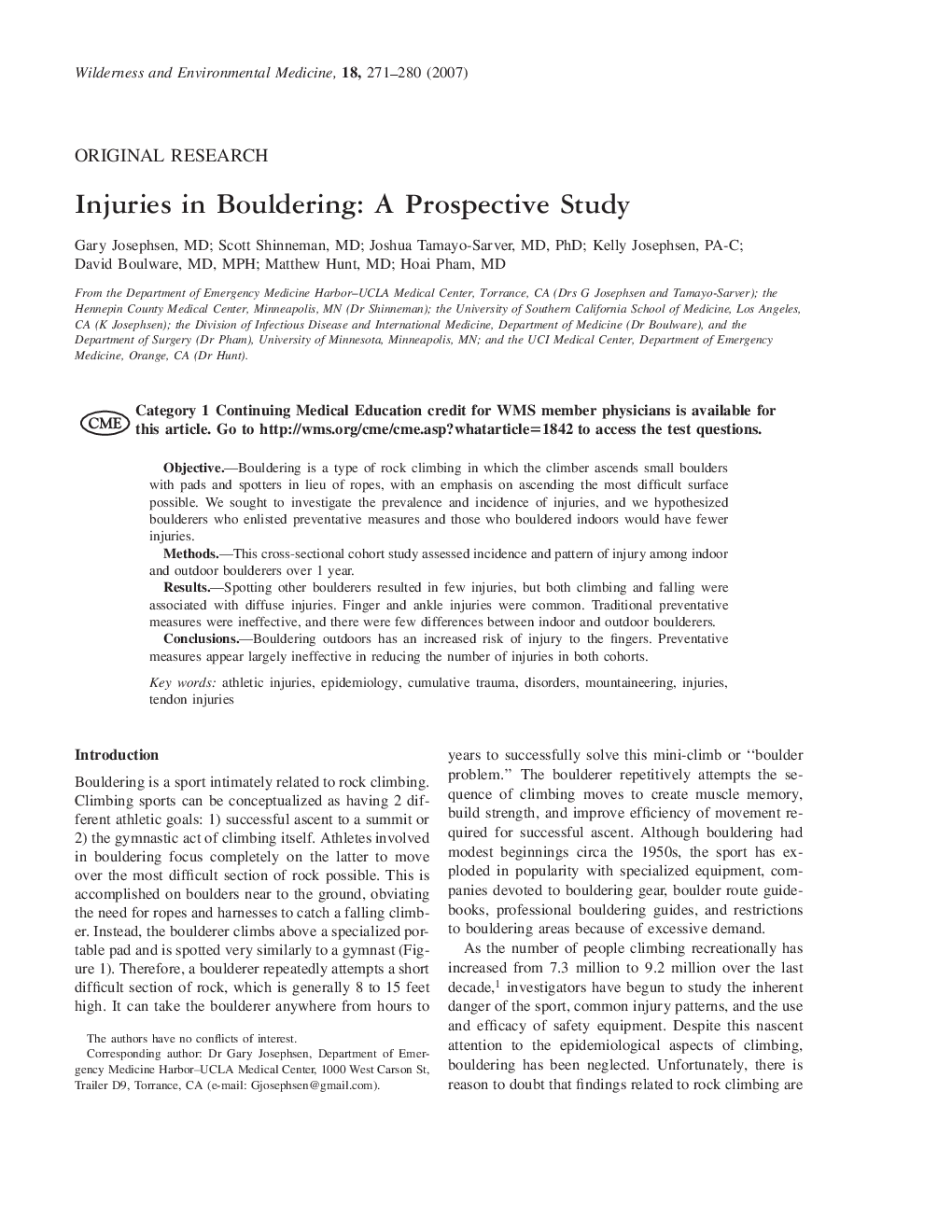| Article ID | Journal | Published Year | Pages | File Type |
|---|---|---|---|---|
| 2615410 | Wilderness & Environmental Medicine | 2007 | 10 Pages |
Category 1 Continuing Medical Education credit for WMS member physicians is available for this article. Go to http://wms.org/cme/cme.asp?whatarticle=1842 to access the test questionsObjectiveBouldering is a type of rock climbing in which the climber ascends small boulders with pads and spotters in lieu of ropes, with an emphasis on ascending the most difficult surface possible. We sought to investigate the prevalence and incidence of injuries, and we hypothesized boulderers who enlisted preventative measures and those who bouldered indoors would have fewer injuries.MethodsThis cross-sectional cohort study assessed incidence and pattern of injury among indoor and outdoor boulderers over 1 year.ResultsSpotting other boulderers resulted in few injuries, but both climbing and falling were associated with diffuse injuries. Finger and ankle injuries were common. Traditional preventative measures were ineffective, and there were few differences between indoor and outdoor boulderers.ConclusionsBouldering outdoors has an increased risk of injury to the fingers. Preventative measures appear largely ineffective in reducing the number of injuries in both cohorts.
